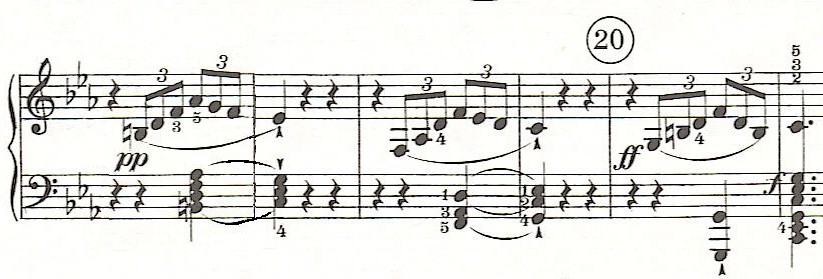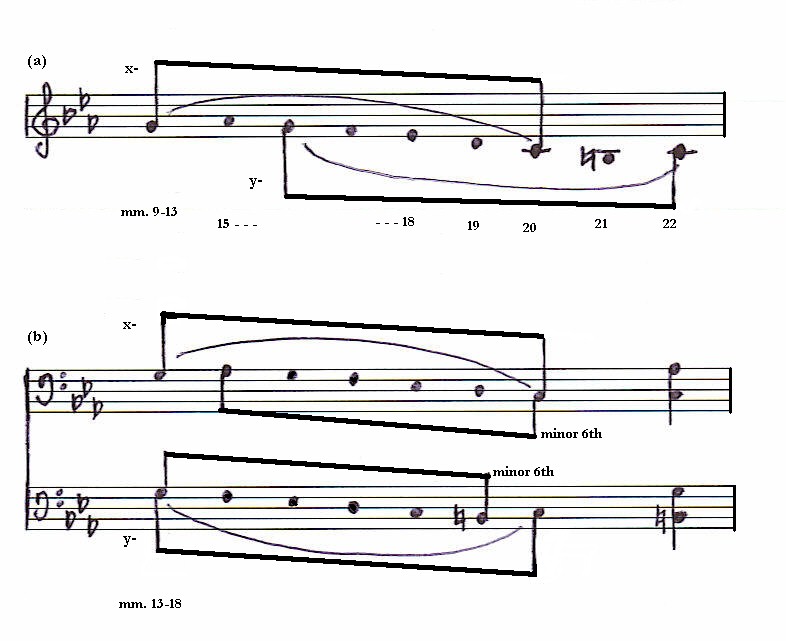 |
| Measures 9 through 16 resemble an eight-bar sentence, but the pause at measure 16 leaves us in limbo. Continuing, the fleeting phrases in measures 17 through 20 "tip-toe" us to the hoped-for c-natural, but completion is not achieved without the leading tone which appears in the grimly victorious phrase in measures 21 and 22. The entire melodic process of descending from the g-natural in measure 9 to the c-natural in measure 22 is a seductive expansion of a dual line (mostly parallel thirds) which is stated with striking simplicity in the left hand part of measures 13 through 18. See example 241b.4. All of this is an elaboration of the descending melodic line in measures 9 and 10. This idea has a wonderful delayed consequence half-way through the movement. (In addition, there are the minor sixths, marked in 241b.4(b), whose thematic significance is discussed later.) |
 |
[I-IV-V-I] Prolongation of Function Elaboration of Motion In Symphonic: Back / Next |
| MODULES Cadential Structure In Symphonic Composition: Analysis of Beethoven's Op. 10 No. 1 (First Movement), continued Lester Allyson Knibbs, Ph.D. |
Cadential Structure in Beethoven's Op. 10 No. 1 (First Movement), continued |
| There is too much to talk about in the simple descending melodic line in measures 9 and 10. |
 |
| Example 241b.3 |
| Beethoven is being coy (example 241b.3). Having reached the high point g-natural, we descend immediately to what seems to be the starting point c-natural, but it doesn't satisfy. For one thing, it's too soon. And the rhythm is tentative, indecisive. Less obvious, but crucial, the c-natural is an octave too high. In the continuation, we have (1) the bass shifting octaves (it was down, then it's up, then down again); and (2) the melody (doubled in octaves) glides down to the g-natural an octave lower. At the time that Beethoven composed this movement, his piano lacked the g-natural above the f-natural in measure 7. Beethoven has turned this lack into a brilliant development. The initial rise from c-natural toward the g-natural an octave and a fifth above (but not reaching it) has turned around into a descent from the g-natural an octave lower than the original goal down to the c-natural an octave and a fifth lower (i.e., middle-c). |
 |
| Example 241b.4 |
Introduction The Chaconne Cadential Structure --- Unitary & Binary Structures Linear & Periodic Structures Modules and Modalities Structural Counterpoint Modular Composition Appendices |
| Sonata Movements Op. 2 No. 1 (I) Op. 10 No. 1 (I) 1 2 3 4 |